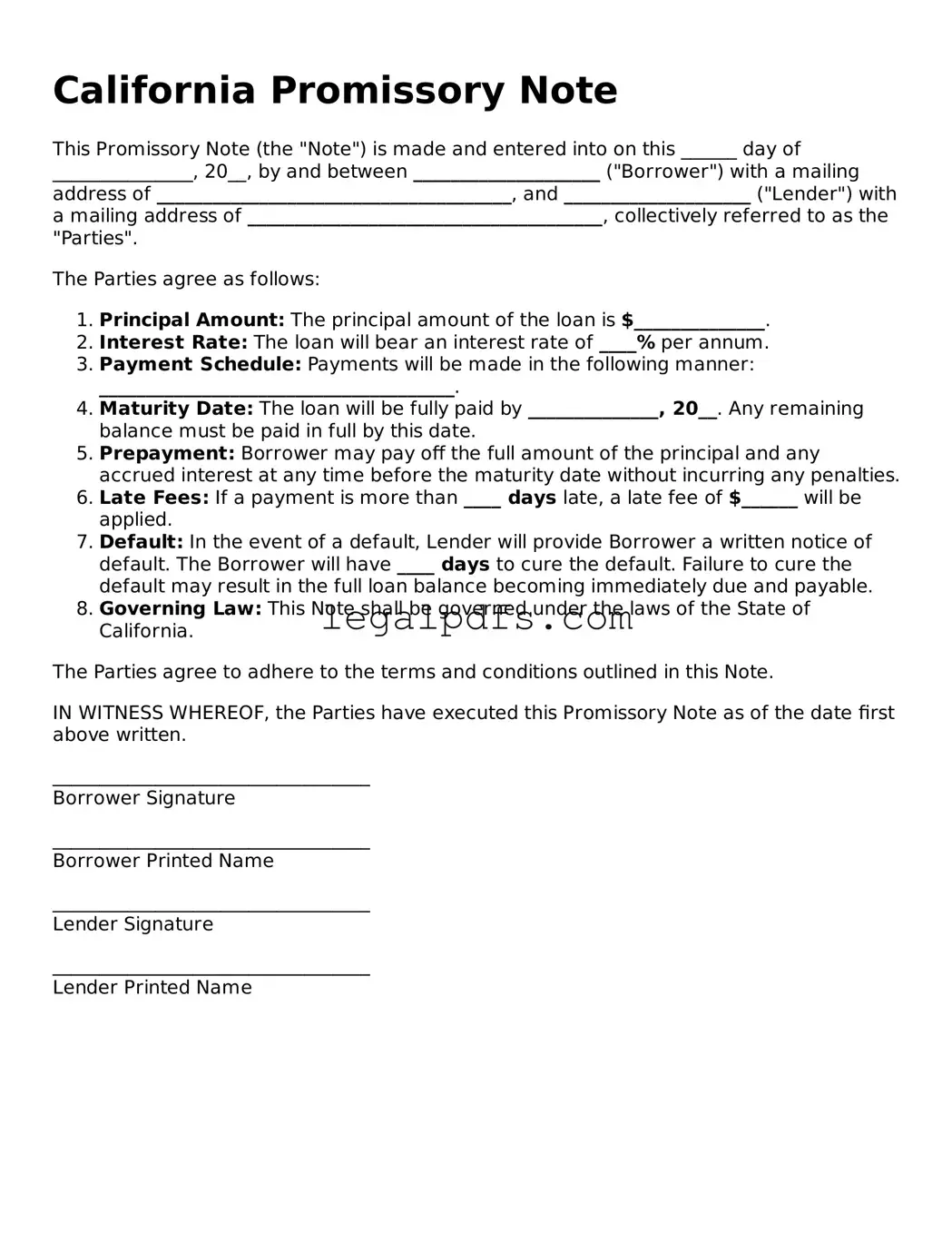California Promissory Note
This Promissory Note (the "Note") is made and entered into on this ______ day of _______________, 20__, by and between ____________________ ("Borrower") with a mailing address of ______________________________________, and ____________________ ("Lender") with a mailing address of ______________________________________, collectively referred to as the "Parties".
The Parties agree as follows:
- Principal Amount: The principal amount of the loan is $______________.
- Interest Rate: The loan will bear an interest rate of ____% per annum.
- Payment Schedule: Payments will be made in the following manner: ______________________________________.
- Maturity Date: The loan will be fully paid by ______________, 20__. Any remaining balance must be paid in full by this date.
- Prepayment: Borrower may pay off the full amount of the principal and any accrued interest at any time before the maturity date without incurring any penalties.
- Late Fees: If a payment is more than ____ days late, a late fee of $______ will be applied.
- Default: In the event of a default, Lender will provide Borrower a written notice of default. The Borrower will have ____ days to cure the default. Failure to cure the default may result in the full loan balance becoming immediately due and payable.
- Governing Law: This Note shall be governed under the laws of the State of California.
The Parties agree to adhere to the terms and conditions outlined in this Note.
IN WITNESS WHEREOF, the Parties have executed this Promissory Note as of the date first above written.
__________________________________
Borrower Signature
__________________________________
Borrower Printed Name
__________________________________
Lender Signature
__________________________________
Lender Printed Name
